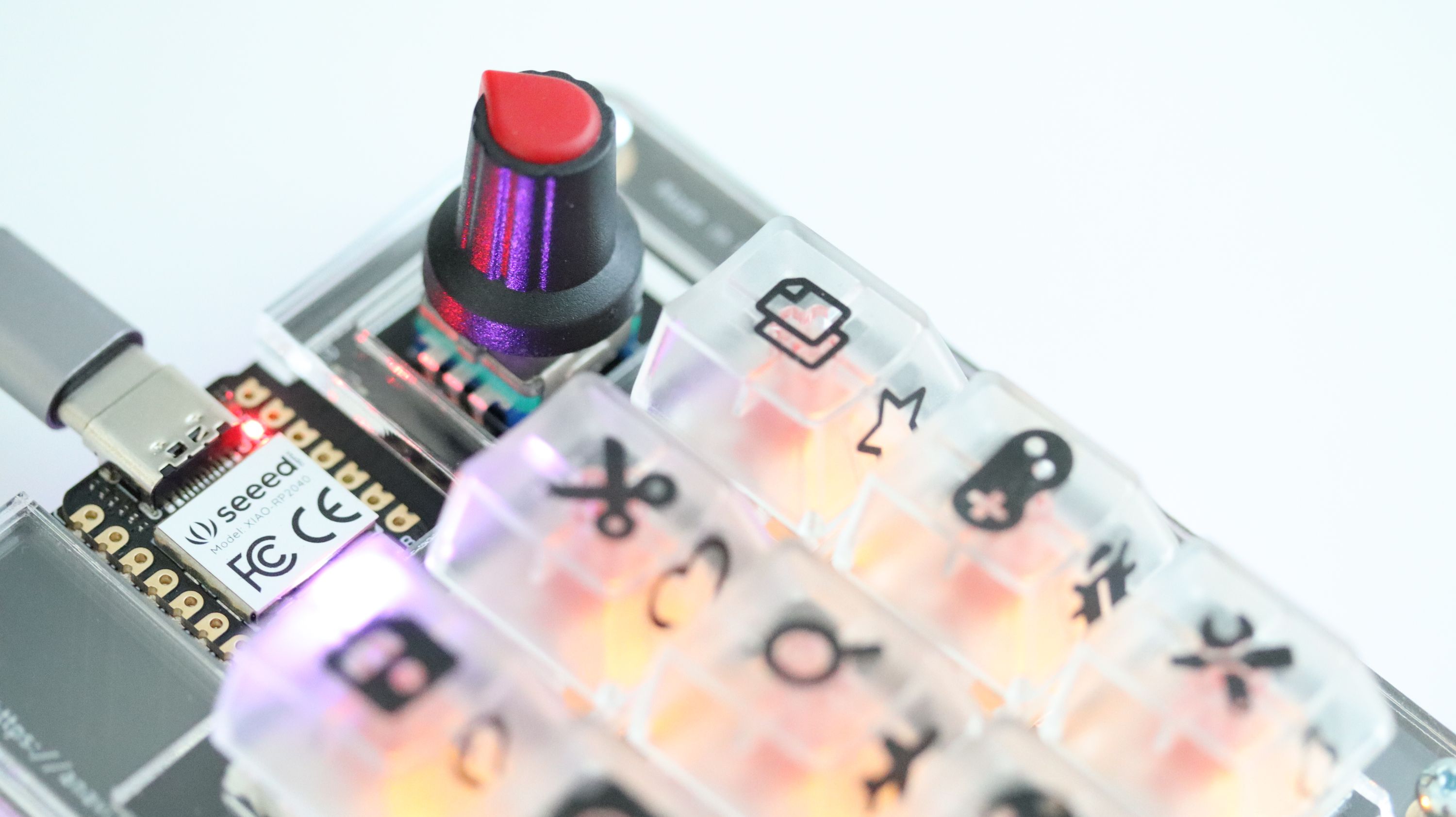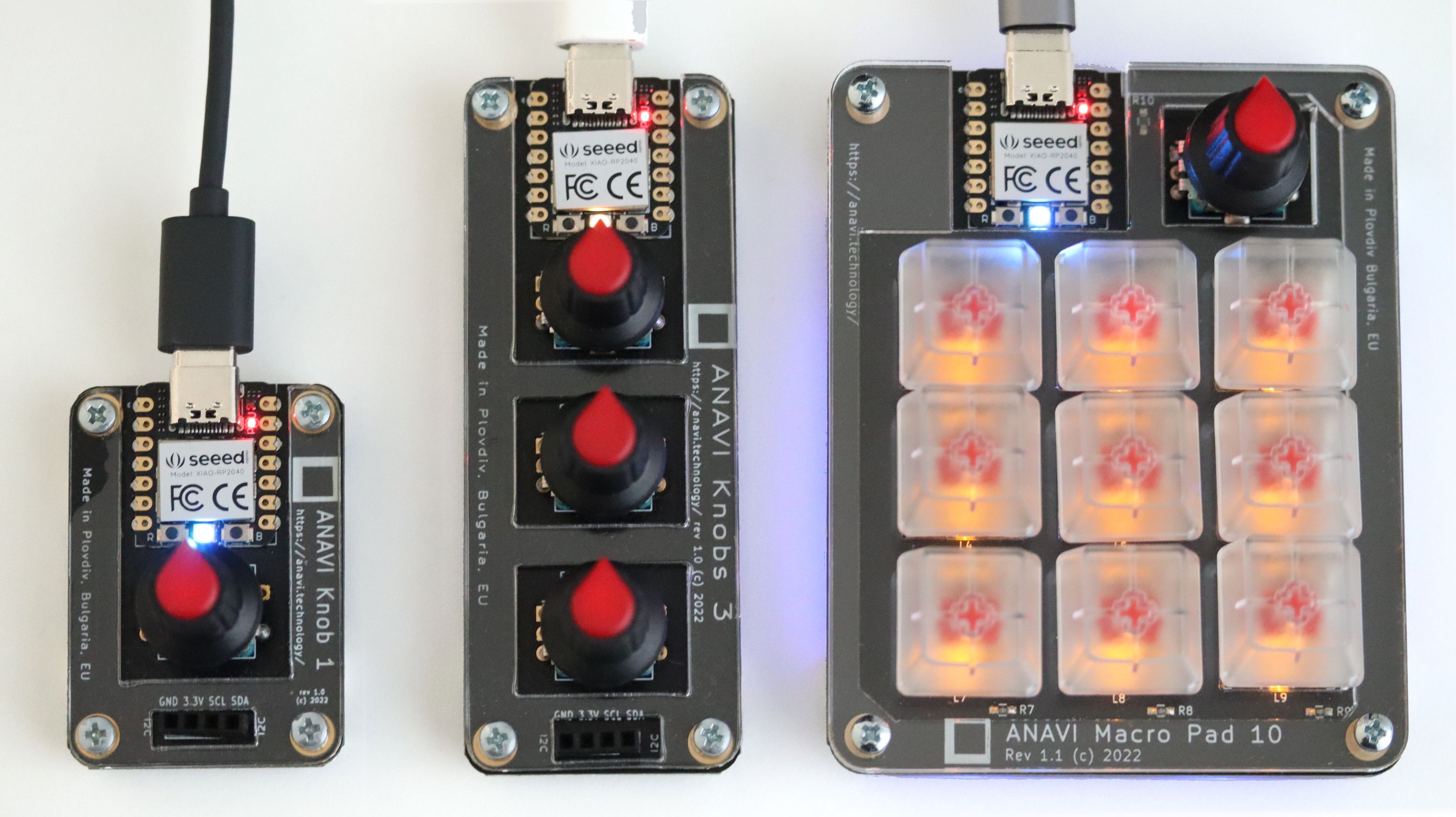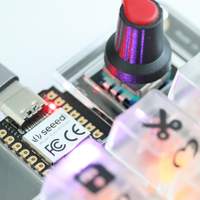Project update 4 of 11
Why is the XIAO RP2040 a Good Fit for Mechanical Keyboards? (Video demo)
by ANAVI Technology(Updated to correct video and image issues.)
The heart of ANAVI Macro Pad 10, Knobs 3 and Knob 1 is the mighty Raspberry Pi RP2040 microcontroller mounted in a Seeed Studio XIAO module.
Raspberry Pi is a well known brand of single board computers. On the 21st of January 2021, Raspberry Pi entered a new market with their first microcontroller. The RP2040 is a 32-bit dual ARM Cortex-M0+ microcontroller. Despite the global chip shortage, it is available and offers amazing technical capabilities at a low cost. It features a flexible clock running up to 133 MHz, 264 KB of SRAM, and 2 MB of onboard Flash memory.
The RP2040 can be programmed in Assembly, Rust, C/C++, MicroPython, and CircuitPython. It is powerful enough to run TensorFlow Lite. The first developer board using it was the Raspberry Pi Pico. Later on, the Raspberry Pi Pico W and many other development boards using the RP2040 from other manufacturers were released.
Seeed Studio has created a XIAO module with Raspberry Pi RP2040 microcontroller. It is FCC and RoHS compliant and has a very small size of just 21x17.5 mm. The castellated holes allow easier assembly with surface-mount technology (SMT). Another important benefit is the USB-C connector.
The XIAO RP2040 is a great fit for many projects, especially for small mechanical keyboards. The 11 digital pins allow designing boards like Knob 1 and Knobs 3 with rotary encoders as well as creating a keyboard matrix like the one on ANAVI Macro Pad 10.
Best regards, Leon





